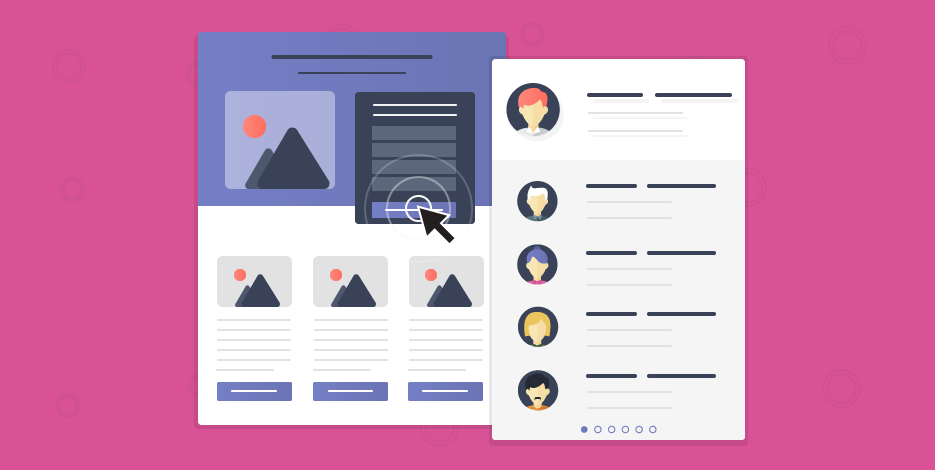
Maximize ROI with Smarter A/B Testing Methods
How to Run Effective A/B Tests for PPC Campaigns
Introduction
When it comes to paid advertising, guessing what works is risky and expensive. That’s where PPC A/B testing becomes a game-changer. A/B testing allows advertisers to make data-driven decisions, optimize campaigns, and improve return on ad spend—without relying on assumptions.
In this article, you’ll learn how to effectively run A/B tests in your PPC campaigns, what to test, how to measure success, and avoid common pitfalls that waste budget.
What Is PPC A/B Testing?
PPC A/B testing is a method where you compare two versions of an ad or campaign element to see which performs better. Also known as split testing, it involves changing one variable—like the headline or CTA—while keeping everything else constant.
This helps marketers understand what resonates with their audience and drives measurable improvements in key metrics such as:
- Click-through rate (CTR)
- Conversion rate
- Cost per click (CPC)
- Return on ad spend (ROAS)
While multivariate testing involves changing multiple elements at once, A/B testing focuses on a single change—making the data easier to interpret and act on.
Key Elements You Can Test in PPC Campaigns
Effective A/B testing starts with the right variable. Here are elements you can experiment with in your campaigns:
- Headlines: Test different hooks, value propositions, or emotional triggers
- Ad Descriptions: Try various tones, lengths, or offer types
- Display URLs: Create cleaner or keyword-rich URLs
- Calls-to-Action (CTAs): Change wording (e.g., “Get a Quote” vs. “Start Free Trial”)
- Landing Pages: Different layouts, form lengths, or messaging
- Ad Extensions: Sitelinks, callouts, or structured snippets
- Keyword Match Types: Broad vs. phrase vs. exact match
👉 Explore Landing Page Optimization Tips to Lower CPC to improve results further.
How to Set Up an Effective PPC A/B Test
1. Define a Clear Goal
Start by identifying what you want to improve—CTR, conversions, cost per acquisition (CPA), or engagement. Clear goals help define success.
2. Test One Variable at a Time
Changing multiple things at once makes it impossible to know what caused the result. Focus on one change per test.
3. Split Your Audience Evenly
Google Ads allows you to split traffic between two ad variations using Google Ads Experiments or campaign drafts. Keep it a 50/50 split for clean results.
4. Run the Test Long Enough
Don’t end a test based on a few days of data. Wait until you have statistical significance, usually after 1,000+ impressions or 100+ conversions, depending on your traffic.
5. Use Reliable Tools
Use built-in features in Google Ads, or third-party platforms like Optmyzr, Unbounce, or VWO to manage and track experiments.
Best Practices for Successful A/B Testing
- Test big ideas first: Focus on impactful elements before micro-tweaks
- Stay consistent: Keep budget, targeting, and schedule the same between variants
- Set a control: Use your current best-performing ad as a baseline
- Use structured naming: Label A/B test ads clearly to avoid confusion
- Document everything: Track what you tested, when, and the outcome for future planning
Showing credibility and structured analysis increases trust—Google appreciates when content reflects genuine expertise.
Interpreting Results and Taking Action
Once your test runs its course, analyze key metrics.
- Did your test version beat the control by a significant margin?
- Use statistical calculators to ensure the results are not due to chance
- Scale the winner: Pause the losing ad and apply learnings across the account
- Document results: Save the insights for future campaign strategies
Testing never truly ends—digital behavior changes, and so should your messaging.
Common A/B Testing Mistakes to Avoid
- Stopping too early: Small data sets often produce misleading results
- Testing too many things at once: Stick to one change per test
- Not retesting over time: A winning version today might underperform tomorrow
- Changing variables mid-test: This invalidates your experiment
- Ignoring seasonality or time of day: These can skew your data if not accounted for
Avoiding these missteps will protect your budget and deliver trustworthy insights.
Conclusion
PPC A/B testing is one of the most powerful ways to optimize your ad campaigns, reduce costs, and increase performance. By testing smartly, staying consistent, and learning from every result, you build a campaign strategy that’s based on proof—not guesses.
Whether you’re testing headlines, CTAs, or full landing pages, even small changes can lead to big wins.
🎯 Want to make your PPC campaigns more profitable through smart testing?
Let Decodigit help you build a data-backed strategy that drives results.
👉 Contact us for a free PPC audit or explore our PPC services today.



